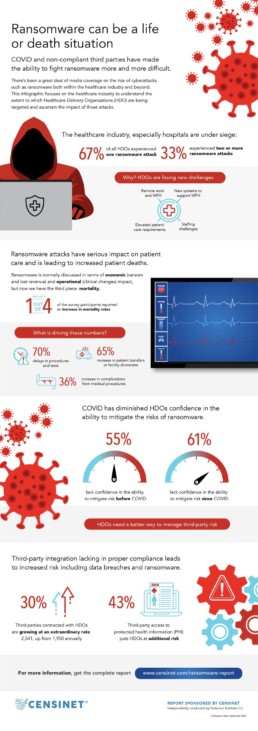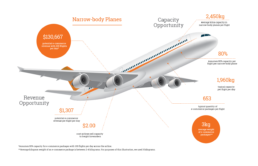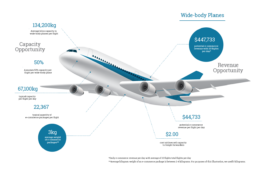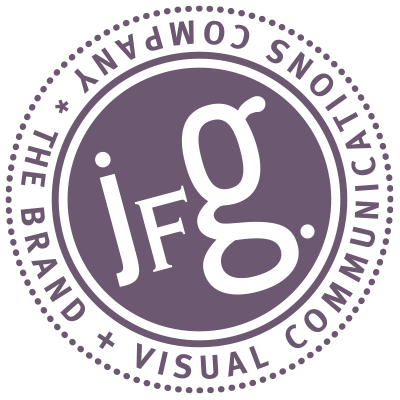Are You Connecting With Your Audience?
To build a thriving business, you need to connect with your audience emotionally and rationally. Good design can evoke emotions and help present complicated information in a way that makes it easy to understand and evaluate.
According to research completed by Antonio Damasio, a neuroscientist and the founder of the Brain and Creativity Institute at the University of Southern California, emotions play a central role in social cognition and decision making. Our emotions drive our behavior, and it is impossible to make a decision without relying on our emotions.
Of course, that doesn’t mean appeals to logic and rational thought aren’t necessary. They are. But how we interpret facts and appeals to reason is based on our emotions, even when we use logic to justify our decisions.
Appealing to logic helps your audience see the problem and solution you offer clearly.
Your product or service needs to solve your clients’ problems. When communicating with prospective clients, you must demonstrate that you understand the problem clearly and can help them solve it. Prove to your clients that you have a methodology, approach, product, or service that will get them the results they seek.
When you appeal to logic, you help prospective clients make an informed decision by showing them that you understand what they need, their concerns, and the steps they have taken so far to solve the problem. That helps you build trust, paving the way for an emotional connection.
Appealing to emotions helps your audience trust that you are the one who can help them solve the problem.
Your product or service also needs to eliminate the stress your customers feel. When communicating with your prospective clients, you need to demonstrate that you not only understand the problem but the emotions surrounding that problem. Every problem has an emotional undercurrent or causes stress that your clients feel deeply. Showing your clients that you understand what they are going through deepens their connection to you and makes it easier to help them solve the problem they are facing.
To connect with your clients, you have to be honest and transparent. You have to show them that you understand and care about what they are going through. Clients who feel emotionally connected to you and your brand are likelier to stay loyal and refer others to you. They are also much more likely to resonate with your marketing.
To connect with your audience, you need to understand who they are and what motivates them.
To engage and connect with your audience, you need to know them intimately. You need to understand what they care about and where they spend their time — online and off. You need to understand their goals, aspirations, and motivations. You need to know what they are thinking about and talking about and where they are having these conversations.
Interview-based customer personas help you understand exactly who your clients are and what they care about so you can connect with them rationally and emotionally. Developing personas can help you understand what your clients want and need. It can help you empathize with your clients and understand the problem deeper so you can guide them towards a solution that works. When you know who your clients are, you can shape your brand, messaging, and voice to connect with them in a way that resonates with them and inspires them to take action.
Good design helps you connect with your audience.
Visual communications and graphic design are crucial tools to help you connect with your customers. Good design can help you communicate your brand, values, and message effectively. As a result, prospective clients can relate to you and thus trust you more quickly if they resonate with your brand.
How your brand shows up is crucial to creating lasting relationships with prospective partners and clients. Your brand must be unique, consistent, and on-point. Your message has to center your clients and speak directly to them. It must show prospective clients that you understand them, what they are going through, and that you can help get them where they want to go.
You can’t effectively connect with your audience if you look like everyone else. So you have to stand out from the competition and resonate with your audience. You must be willing to show your prospective clients who you are, so that they trust you enough to let you help them achieve their goals. And that means you have to show up in a way that is uniquely you.
We should talk if you want to deepen your connection to your audience. As a brand strategist and designer with expertise in visual communications, I can help you connect with your audience in ways that are powerful, effective, and uniquely you. To see if we’re a good fit, schedule a 30-minute consultation.
Rebranding? Consider a Brand Analysis First
Rebranding doesn’t have to be daunting, expensive, or feel like you are starting over, not if you consider a brand analysis first.
As an entrepreneur, you are constantly learning, stretching, and growing. Evolution is a natural progression. Yet, as your business gains traction, you start to realize whom you do your best work for, who isn’t quite the right fit, and which marketing tactics are thriving and which are not. Maybe the brand identity you thought would last is starting to look dated and not setting the right tone of what you represent. Perhaps your messaging isn’t hitting the mark with the ideal customers you have come to know.
Your brand is the one thing that can set you apart from your competition, but with constant change, audience refinement, and inconsistent esthetics, how do you know if the brand you started with is still unique or powerful enough to cut through the noise and speak to your ideal customer? It might be time to review your brand so you can bring it back into alignment with your business.
Why conduct a brand analysis before rebranding?
A brand analysis is a process that identifies and assesses the key components that make up your brand: positioning, messaging, personas, esthetics, and more. It gives you a holistic view of how your company presents itself to the world. An effective brand strategy is your business foundation.
Yet, when your marketing is no longer as effective as it once was or is not working, it’s time to consider what needs to happen to get back on track.
When rebranding, you don’t want to start from scratch because you’ve already invested time, money, and effort into building your brand. You want to create a brand strategy that builds upon your brand’s strengths. A brand analysis lets you evaluate your current brand to identify your assets and determine areas of strength, weakness, and gaps that either already work well or need to be updated so they speak to your audience more effectively. Keep what works; fix or remove what doesn’t.
The brand analysis revises and enhances your brand strategy.
A brand analysis gives you a clear sense of direction and purpose to what to fix to move forward. Uncovering the gaps and challenges is the only way to see what you may need to rethink and adjust. A few adjustments to the overall approach will align your message and image with your brand strategy.
For example, if your messaging has lost its focus, you might need to create new personas, try a different angle with your position in the marketing place, or reevaluate who your competition is. In addition, you may find that an updated style guide, adjustments to your voice on social channels, or redefined service offerings ensure that your message is relevant and resonates with your audience. By refocusing your brand, you will ensure that every communication you send out into the world will be evident that it comes from your brand.
Rebranding doesn’t have to be overwhelming.
The rebranding process can feel daunting, but you don’t have to go through it alone. When done well, a brand analysis provides actionable insights that will help you develop a strong brand and marketing strategy. In addition, by conducting a brand analysis before engaging in any form of brand strategy, you’ll ensure that your rebranding efforts are successful and meaningful. To learn more about the rebranding process, how a brand analysis can save you time and money, or how a brand strategy can help you set the foundation for your brand, schedule a complimentary 30-minute consultation today.
Do You Need a Brand Roadmap for Your Business?
Yes, you do!
A brand roadmap is a guide assembled from the findings gathered from a strategy workshop. Working with a brand strategist offers expert insights and an outsider’s perspective to make sure the assumptions you base your business on are realistic and, whenever possible, supported by data. A brand roadmap includes all the brand essentials your business needs to stay consistent and drive the brand look and feel.
How do you complete a brand roadmap?
Development of a brand roadmap starts with a series of brand strategy workshops that explore and define several key topics. Once these items are specified, the roadmap is the document that clearly discloses all the findings. These include:
- Competitor Analysis. An evaluation of your competitors to gain insights into their products, sales, and marketing tactics so you can differentiate your company effectively.
- Brand Promise. Your business’s promise or commitment to the customer, implicitly or explicitly, about what they can expect from your company.
- Positioning Statement. A positioning statement describes what your company does, defines your company’s target market, and details your company’s differentiator.
- Core Values. A set of guiding principles and fundamental beliefs to govern how your company operates.
- Brand Attributes. A set of personality traits to define a company’s culture, customer, voice, look, value, and differentiator.
- Brand Archetypes. A way of presenting a brand as a person to capture its symbology, values, behaviors, and messages.
- Customer Journey. A description of a customer’s entire experience while interacting with a brand.
- Customer Personas. A semi-fictional depiction of your company’s ideal customers based on market research and interviews.
- Visual Design and Style Guide. A set of standards that define the look and feel of your brand, including stylistic direction and guidelines about typography, colors, photography, graphic elements, and logo variations and placement.
- Action Plan. A list of tactics with a timeframe and defined milestones outlining the steps your company needs to take to achieve its stated business goals.
How can a brand roadmap help you succeed?
A brand roadmap must be tailored to the individual company and reflect the company’s goals and objectives to be effective. An effective brand roadmap also requires defining a deep understanding of your competition and your customers. When you truly understand what is most important to your customers, you are better able to connect with them. And that connection allows you to gain their attention, earn their trust, and inspire them to work with you to solve their problem. Likewise, when you understand your competition, you can see where you stand in the marketplace and how you stand out.
By creating a brand roadmap, you can ensure that your marketing efforts are coordinated and focused on your company’s most important goals. In addition, it will help your company stay on track and provide clarity for your team, who have a vested interest in understanding how you intend to grow your business.
A brand roadmap can re-energize your company by giving you a sense of direction and purpose. That purpose helps you stay focused on what matters, especially when you’re in the midst of fast-paced growth. And that focus helps your business avoid the most common mistakes that often derail a business’s growth, such as focusing on the wrong audience or trying to solve the wrong problem.
A brand roadmap can help you make informed decisions about where you want your business to go and how best to get there. It keeps you focused and on-task to build momentum as you grow. And it helps your business stand out — to customers, employees, and investors — in an increasingly noisy and competitive market.
Why might you need a brand roadmap?
If your business is not growing, ask yourself how clear you are about your customers, messaging, and positioning because something isn’t aligned properly. Then, a brand strategy workshop might be precisely what your business needs to fuel its growth. To learn more about how a brand roadmap can help your business grow, schedule a 30-minute consultation today.
Creating Customer Personas that Drive Business Growth
Customer personas are semi-fictional representations of individual customers that help you understand your customers and the challenges they face. Smart, well-researched customer personas help you develop product features and functionality that speak directly to customer needs. It also informs your customer journey, marketing strategy, and customer service initiatives.
When you clearly understand your customers, including their values and motivations, you can anticipate their challenges, needs, and objections. That understanding will help you develop messaging that gains their attention, earns their trust, and inspires them to work with you. It will also save you a lot of time and money.
Five Steps to Creating Customer Personas that Matter.
The more accurate and detailed your customer personas, the more useful they will be to your marketing, product development, and customer service teams. Your customer personas will evolve as you get to know your customers. So it’s important to review and update your customer personas at least once a year. To create your initial customer personas, follow these five steps:
1. Analyze the data. Who are your current customers? What do you know about their values, motivations, and buying habits? How did you connect with them, and what did you learn about how they see the problem you can help them solve? What do your current customers have in common? How would you categorize them?
2. Create a demographic profile. When considering your target market, think about any demographic features they have in common. Do your customers fall within a certain age or income bracket? Do they live in a particular region? Do they have a specific profession, degree, or certification?
3. Understand their motivations. What keeps your customers up at night? What pain do they want to avoid or bring to an end that your company can help them with? How do they describe the problem you solve, and how important is it that they solve it?
4. Get to know them as people, not targets. What matters to your customers? What values do they share? What gets them excited? How do they like to spend their free time? What social media sites do they use regularly? What blogs do they read? Who do they look to for advice and inspiration?
5. Interview your customers. While it’s fine to start with educated guesses, the best customer personas are based on real people. Talk to your customers and get to know them. Record your conversations so you can capture the words your customers use to describe their challenges, needs, and desires. Empathize with their story, and connect with them on an emotional level. These interviews allow you to capture how they talk about the solution you provide and how you’ve helped them, and are incredibly valuable for your messaging.
Take the Time to do Your Research
Customer personas are semi-fictional. In other words, they are based on real people. Take the time to create personas that reflect your very best customers, and use those personas to guide your product development, customer service, marketing, branding, and messaging. A poorly-developed persona will result in products, services, and messaging that miss the mark, while a well-developed persona will help you create products, services, and messaging that attract the right clients and brings them back again and again.
In many cases, you will need to develop more than one persona to capture your customer segments accurately. To determine how many personas you need to create, consider how different types of customers will interact with the product or service. For example, can you categorize your customers by their challenges or the pain they experience? Think about how different customer segments will respond to various messages and offers. It’s better to have two or three detailed, specific, and in-depth personas than to develop one generic persona.
Connect with Your Customers on a Personal Level
When you know precisely who you are speaking to, how you can connect with them, and what solutions you can offer that solve a specific problem, you will be able to create messaging that resonates with your perfect customers. When you connect with your customer emotionally, you inspire customer loyalty and ensure that they see you as the best solution to their problems. You earn their trust by speaking their language and offering real solutions to their most significant problems.
Creating a customer persona is an essential part of developing a customer-centric strategy. By understanding who your customers are and what motivates them, you can create products and services relevant to them. By understanding what drives them, you can better understand how to serve them through a customer experience that pleases them. If you can show your customers that you know who they are and what is most important to them, they will reward you with their business, loyalty, and referrals.
Maybe it is Time to Revisit your Customer Personas
If your products, services, or messaging isn’t resonating with your audience, you may need to revisit your customer personas. As a brand strategist, I can help you develop clear, precise, and powerful personas that allow you to create products, services, and messaging that will make it much easier to grow your business. To learn more, schedule a 30-minute consultation.
Warning Signs: Five Signs That Your Start-Up Needs a Brand Strategy
Start-ups are exciting places to work. The culture is fast-paced and creative. Deadlines are tight, and the stakes are high. With so many moving parts, it’s easy to get caught up in the excitement and launch before you’ve done your due diligence to determine whether your product meets an actual market need.
If you haven’t taken the time to develop a unique value proposition — a positioning statement that details who your audience is, what benefit you provide, how you deliver that benefit, and why it is the best option on the market — you’re not alone. In the excitement of creating something new, many start-ups miss this critical step. Some don’t think of it. Others believe it isn’t that critical because they know their audience well.
So, How Do You Know if You Need a Brand Strategy?
Several warning signs indicate that your start-up needs to invest in a brand strategy. The more warning signs you see in your organization, the more critical the need is. Below are the five most significant warning signs that your start-up needs a brand strategy:
- People outside of your organization don’t understand what you do. How hard do you make people work to understand what you do, who you help, and why they should care? If your messaging and graphics are constantly shifting, and every team member has a different way of describing what you do, you will confuse your audience. The same is true if your message consists of jargon and buzzwords. If your audience has to work too hard to understand what you do, they’ll move on to a company that is clear about the problem they solve and how they solve it — even if that solution is not as good as yours.
- Investors and customers are not interested in your solution. If you are trying to gain the attention of prospective investors or customers and are met with silence time and time again, your message isn’t resonating with your audience. Perhaps the messaging is unclear? Or, if your message is clear and consistent, maybe you don’t fully understand what your audience needs to move forward? Either way, it’s time to go back to the drawing board.
- Previous investors are not participating in additional funding rounds. You made it through the first round of funding, but now the investors aren’t looking to invest further. Why? Did the initial investment not generate the results predicted? Have there been shifts in the product causing them to lose faith? Or is your message to your ideal customers just not hitting the mark?
- You don’t know your competition. If you don’t know who your competition is or, worse, you don’t think you have any competition, that means you don’t fully understand the market or the marketplace. Working with a brand strategist will help you know your competition so you can effectively demonstrate how you are different.
- You feel like you are constantly putting out fires instead of gaining momentum. If you are always in a rush and never sure what steps to take next, you need to step back, invest in brand strategy, and create a plan based on that strategy. A documented, realistic plan based on customer insights and a brand strategy will not only show investors that you’re serious, but it will help you communicate better with your prospective customers so you can close more deals.
To successfully launch your start-up, you must know why your idea is needed, who it will help, how it will help them, and what makes it a better solution than the alternatives. By working with a brand strategist, you will find all the answers to those questions. In addition, it enables you to clarify your voice and message, so you speak directly to the needs of your audience. A solid brand strategy is a foundation upon which you build your business.
Invest the time in developing a brand strategy before you launch your start-up. Then, as the company grows, you can refer back to the strategy and adjust it as necessary, so you always move forward. Your brand strategy will show you where you started and where you plan to end up. It will grow along with your company, adapting to the needs of your customers and updating after you achieve each milestone in your business.
If you’re experiencing any of the warning signs listed above, a brand strategy will help your company gain traction. I work with many start-ups, and the most successful ones have a solid brand strategy at their core. If you’d like to talk about how we can work together, schedule a 30-minute consultation.
Is Your Start-Up Built on a Faulty Foundation?
If You Don’t Have a Brand Strategy, the Answer is Yes.
Your company began with a brilliant idea — an idea that has the potential to disrupt an entire industry. The product was created, tested, and tested again and is now ready to launch. You have a logo and a website, but do you have a brand?
A strategic brand breathes life into an idea and makes it easy for others to understand its potential. A strategic brand can show an idea and make it stand out from the rest. A strategic brand helps an ideal customer learn how this great idea makes their lives easier.
By working with a brand strategist, you will identify what makes your product different from all the other options on the market and, even more importantly, why your ideal customers, investors, and co-workers should care.
Three Ways your Brand Strategy Powers your Growth.
Your brand strategy breathes life into your idea; it allows your ideal customer to connect with your vision and see its full potential. A brand strategy will help your start-up:
- Define the vision. By working with a brand strategist, you will clarify your purpose and develop a unique value proposition. Understanding your intention and the value you bring to the market makes it easier to define your vision for the future. Instead of brainstorming a list of things you think you need to do, the brand strategy process will bring to light the most valuable tasks to your organization. That allows you to develop SMART goals to work towards the same outcome. With a solid strategy in place, you get a realistic look at the resources you will need to execute your plan.
- Convey the brand experience. The brand strategy process helps you know exactly who your audiences are, the goals they have, the challenges they face, where you can reach them, and how you can help them. This information allows you to develop a compelling message based on your unique value proposition that speaks directly to each audience segment. It lets your audiences know how your idea can help them achieve their goals. A brand strategy also enables you to establish a single voice and strong point of view that carries through both your internal and external communications.
- Attract investors, customers, and employees. Investing in a brand strategy is an investment in your reputation — and your reputation is your most valuable asset. If you can’t demonstrate that you are trustworthy, attracting investors, customers, and employees will be almost impossible. Developing and faithfully implementing your brand strategy is the most effective way to demonstrate your trustworthiness and build your reputation.
It is vital that your brand be established on a solid foundation, especially when you launch your start-up. If a launch goes poorly, you will have wasted a lot of time, energy, and effort. You might be able to go back to the drawing board and start again, but many great ideas are never realized because of a failed launch.
If you are launching a start-up later this year, or if your company’s growth has stalled because you aren’t clear about your customers, messaging, and positioning, we should talk. As a brand strategist and designer with expertise in visual communications, I help start-ups transition from stealth mode to growth mode. To see if we’re a good fit, schedule a 30-minute consultation.
Visual Communications: A Strategic Approach to Business Growth
Does your start-up use all of the communications tools available to support your brand and marketing strategy? Strategic use of visual communications is increasingly important in today’s fast-paced, digital-centric era. As humans, we are hard-wired to process visual information accurately and quickly, so it makes sense to rely on visual tools to get your message across. To understand the power of visual communications, let’s look at what it includes and how it can help you achieve your business growth goals.
What Is Visual Communications?
Visual communication is the ability to create visual content that delivers information in an easy-to-digest, accurate, compelling way. A designer experienced in visual communication uses a variety of elements to develop a narrative and seeks communication solutions that transcend mere words.
Designers become storytellers. Through graphic forms, formats, and mediums, visual communication is used to best convey the brand story to the intended audience. The goal is to design to inform, educate, persuade, and even entertain your target audience—designers design with purpose, not just to look pretty. Content plays an important role. As a visual communication designer, my goal is to decipher content down to the message’s core and create the best visual solution. Visual communications includes but is not limited to:
Graphic Design
Graphic design is a visually driven medium in which various design elements are combined to create a tangible item, for example, marketing collateral, a brand identity, a responsive website, etc. A single piece of graphic design often aims to achieve a cohesive aesthetic by following industry best practices and creating a particular mood or tone while still respecting a company’s brand and marketing strategy.
Repurpose content by borrowing from sections, highlighting graphs, capturing call-outs and quotes and turn them into great social media material.
Data Visualization
Data visualization is a visual representation of data and numbers. Charts or graphs are the most common executions, still, they are very limited in conveying a complex message or story without added context to describe what the graphic represents.
Motion graphics are an excellent example for explaining information or promoting products for they rely on a multi-sensory approach to capture an emotional response from the viewer.
Infographics tell a story using facts, data, and visuals. They work in digital and print formats and are an excellent tool for presenting a clear data- or fact-based message. In essence, data visualization helps make complex data relevant, accessible, and memorable.
When designing graphs or charts, think a bit differently. These two examples are an execution designed from a table of data. By adding a graphic that supports the data, the data is easier to visually digest and fun to view.
How Do Visual Communications Support Business Growth?
Visual communications executed in accordance with a clear marketing strategy are a powerful force for business growth. According to E-Learning and the Science of Instruction by Dr. Ruth Colvin Clark and Dr. Richard E. Mayer, text combined with graphic elements improves reading comprehension by as much as 89 percent compared to text alone. We are hard-wired to process visual information quickly and accurately. Visual communications significantly impact brand marketing strategies by empowering start-ups to communicate with their target audiences in a clear, compelling way that feels natural to those audiences.




Do you have a long form report or a blog post full of stats and data? An infographic is the best way to capture the highlights and show in a visual way.
A Few Helpful Tips
Effective visual communications express complex information with multiple layers of meaning. By distilling text into the most concentrated version of itself, visual communications deliver. Here are a few tips to follow when thinking about visual communications:
- Follow a visual-first approach. Visuals must deliver as much meaning as the copy — or more. People digest and comprehend visuals 89% faster and more effectively than reading copy alone.
- Deliver a defined tone to an audience. From stroke weight to visual style, visuals combine aesthetic choices, movement, and information to tell a unified story. Creating a library of custom iconography ensures that your brand is never confused with the competition.
- Reinforce a brand’s visual strategy. With thoughtful and strategic color, illustration, and typographic choices, visuals drive your company’s message and goals forward.
- Create Visual that the Audience will Retain. Retention of information is ultimately the goal for any brand. Major brands are known for the visuals they create to support their brand and is a significant part of their marketing strategy. As a start-up, your goal is to create visuals that your ideal audience can easily recall.
Are You Ready to Incorporate Visual Communications into Your Marketing Strategy?
When visual communications are applied appropriately, it can be transformative. That is why visual communications should be a crucial part of your marketing strategy. According to Venngage, when marketers were asked which types of visuals helped them achieve their marketing goals in 2020, 40.8% said that original, custom visual content such as illustrations and infographics outperformed video, presentations, charts, stock photography, and white papers or ebooks.
Visual communications drive your brand’s unique message. By working with a designer who is an expert in visual communications, you will find a visual solution to support any content your marketing plan requires. If you’re ready to incorporate visual communications into your marketing strategy, schedule a 30-minute consultation.
How to Ensure a Successful Creative Project
Do you know what is required to ensure a successful creative project? Of course, setting expectations is crucial, but providing constructive feedback is also an essential element. Effective feedback helps your creative project develop, improve, and succeed to support the brand, so it speaks to your audience. Creative projects are, by their very nature, collaborative. The most successful collaborations are built on mutual respect, open communication, and complete agreement with the end goal. Each party must be committed to the process and willing to challenge one another while providing honest and constructive feedback. When I work with a client, our work together is a true partnership. Each of us brings to the table expertise, knowledge, and experience that is an essential component to a successful engagement.
When it comes to your company, you are the expert and know the goals you have for your business. You know your audience, including what they struggle with and hope to achieve. You also know your products and services and how your company can best help your clients. Finally, you know how you want your competition, prospective clients, and team to feel about your company.
When it comes to visual communications, however, I am the expert. I provide solutions to problems. My work is purposeful. I am on your team and want your project to not only accomplish its goal but be a smashing success — which is also why I won’t shy away from telling you if you’re making the wrong call. I keep your strategy, audience, and goals in mind at all times. When I present a solution, it is unique to your project’s objective. The only way I can do that effectively is if we work together.
Six Tips to a Successful Creative Project
The most successful creative projects follow a similar pattern and adhere to a number of expectations around the project’s stakeholders, schedule, and objectives. It also requires us to give and receive constructive feedback, feedback that is specific and actionable. Here are the several tips I talk to my clients about to ensure the success of their creative project:
Involve all stakeholders from the beginning. It’s crucial to know who will be involved throughout the project process. I need to know who is responsible for providing input, giving feedback, and serving as the final decision-maker. Because design is a process, I like to involve at least two stakeholders throughout and avoid any last-minute additions to the team. While everyone has different personal preferences, any decision made by large committees will require compromise and therefore lack a singular vision. Because vision is not a group activity, having many decision-makers interferes with the possibility of the process going smoothly.
Respect the schedule. Agreeing on a timeline is an essential part of any project process. At the beginning of an engagement, we’ll work together to create a detailed schedule that includes deadlines for presentations, reviews, and feedback. Meeting these deadlines is critical if you wish to complete the project on time. If there is a need for additional time for input or another round of creative development, the project deadline will need to be adjusted. Every extra day added to the schedule will require at least three additional days added to the project deadline. Rushing leads to unfortunate mistakes, especially if it’s due to waffling over decisions or delaying the start of the project. If anything puts our deadlines in jeopardy, I will let you know right away, and I appreciate it if you return the favor.
Document your feedback. Feedback is most effective when we can talk through it at a conversational pace. If you send a list of critical bullet points with minimal context, you’re unlikely to make your point effectively. Instead, take the time to talk through your notes — either face-to-face or on the phone. When the conversation is over, always follow up with a list of your specific feedback notes. With any project, it is essential to document all feedback. I use a combination of two tools, Adobe PDFs and Asana. I find it helpful to annotate a PDF of the design, capturing your notes and ideas within the project document. I then use Asana for project management. Asana is an efficient way to collect and document your feedback. Asana keeps everything in one place, so none of the details are lost. It also notifies you of tasks and due dates, tracks which revision we are on, and shows us where we are in our project timeline. This combination of tools saves time, reduces miscommunications, and keeps us accountable to one another. Documenting feedback is especially important when several stakeholders are involved in the project.
Be direct, honest, and specific. For our partnership to succeed, I need to know what works well and what doesn’t. We must both be as specific as possible. General feedback won’t help a creative project push toward a final product. However, you can take broad criticism and turn it into better feedback by giving specific examples. Let me know if you’re envisioning brighter colors, bolder fonts, or larger graphics. Understanding why you like or dislike a design element gives me more context. It lets me determine whether I need to modify the design, propose a different solution, or advocate for the one I already presented. Specific notes can propel creative projects forward, while general criticism can turn a feedback session into a waste of time.
Identify the problem, not the solution. My goal is to show you solutions that work, so please point out anything that isn’t working as soon as you see it. Try to avoid giving prescriptive feedback. For example, instead of asking me to move a button and make it bigger or bright red, explain why you want to make a change. Are you afraid that people won’t see it because it doesn’t stand out from the rest of the copy on the page? Or do you think the font is too small to read? Also, pulling together design examples that embody what you are looking for can be helpful in the beginning stages. But designing a mockup with direct instruction to follow precisely short-changes what is supposed to be a creative and collaborative process. Once I understand all of your concerns, we can discuss possible solutions and resolve the problem together.
When in doubt, refer back to the strategy and the brand guidelines. With every project, there should be a strategy in place to guide the process. If your company has brand guidelines, you can refer to them to determine whether a particular direction is aligned with the overall strategy. The strategy is there to guide us to the goal. If there is any doubt refer to these items to make sure we stay on track. Because what we like is so subjective, it’s helpful to keep the strategic goals in mind and think about the design from your ideal client’s perspective.
It All Comes Down to Communication
When you work with me, you’re bringing on a strategic partner who will take the time to understand your brand and your audience, and who will help you achieve your business goals. My goal is to show you visual communications solutions that work. We achieve the best results when we exchange ideas openly and honestly.
If you’re looking for a creative partner to help establish your brand and grow your business, schedule a 30-minute consultation.
Five Reasons Your Start-Up Should Hire a Fractional Creative Director
Have you ever thought of bringing on a fractional creative director? It might be a wise consideration for your start-up while you are in the process of scaling up and need a solid foundation for your business to grow while catering to your customer’s needs.
What is a fractional creative director?
A creative director develops and oversees a brand’s visual communications strategy, including the brand identity and brand expressions applied to content marketing, website, social media, marketing collateral, etc. In addition, a creative director works with marketing and sales to bring the creative strategy, experience, and expertise to the table and oversees creative team members, including writers, graphic designers, and web developers.
A fractional creative director provides all of these services but works with you on a part-time, contract basis. When you work with a fractional creative director, you partner with an experienced professional who helps you progress towards your goals week by week. It is a flexible, sustainable, and affordable way to build your brand. A fractional creative director might work with you one to three days a week for six months or more, depending on your needs.
Why hire a fractional creative director?
A fractional creative director sets your business up for success. Once they understand the goals you have for your business, they can manage the process and help you move your business forward. A fractional creative director will:
Develop a strong brand strategy for your start-up before you go to market. A strong brand identity with robust brand standards provides a solid foundation for business growth. Your brand standards define your company’s purpose, vision, value, and position in the market. It helps you stand out from the crowd and guides your marketing initiatives. The stronger your brand is now, the easier it is to add new elements in the future. If your start-up doesn’t already have this going, a fractional CD can take you through the process so you won’t have to hire an outside resource.
Maintain and evolve the focus of your brand strategy as you grow. A solid and consistent brand builds credibility and inspires brand loyalty—the more people involved with your company, the greater the potential to dilute your brand. As different people take responsibility for your pitch deck, social media, email marketing, presentations, and other marketing and sales collateral, each uses a slightly modified font, photograph, or graphic element, interpreting your brand through their lens. To rein in these interpretations, a fractional CD can oversee what is being put out to the client and remind the internal teams of which guidelines to follow. Not sure where your branding is going? A fractional creative director can always conduct a brand analysis (also referred to as a brand audit or brand assessment) to get back your brand back on track.
Save you money. Instead of hiring a large creative agency or staffing up with junior-level positions, a fractional creative director can work with your existing team to provide the strategy and implementation resources you need. Working with an agency will make sense in certain stages of growth, yet when your start-up is not quite there, contracting a fractional CD will enable you to have the same value and expertise without the agency cost. Often, start-ups hire junior-level staff to save money, which is wise to a degree, but it also comes with a lot of hand-holding, lack of skills, or experience to know what to do when challenges arise. In a fast-paced environment, this might not be ideal. A fractional CD knows what needs to happen and can help mentor the junior-level people to have the guidance and skills they need to grow. Over the long term, the investment you make with a fractional CD will show in the growth and learning of the junior teams. When things get overwhelming, the fractional CMO will be able to step in.
Support your fundraising, marketing, and sales initiatives. It is crucial to have a strong brand strategy during the start-up phase and accompanying visual communications targeted towards prospective investors and customers. A fractional creative director can work with your team to ensure that every communication, from social media to pitch decks to sales demonstrations, showcases your company’s solution and builds your reputation with your audience. A fractional CD can also be an added expert when talking with possible investors by being the voice of their visual communicationns and content marketing strategy.
Be a partner in growing your business. A fractional creative director is a strategic partner who can work with you regardless of whether you have a Chief Marketing Officer on staff. For example, if your company is in the process of hiring a CMO, it might make sense to bring on a fractional creative director now. That way, you can move your marketing initiatives forward while you take the time to make that vital hiring decision. And if you already have a CMO on staff, a fractional creative director can serve as a sounding board and oversee the executive level of visual communications strategy.
To build a sustainable business, you need a strong foundation.
As a start-up organization, you know how important it is to make an excellent first impression. Your company is just breaking into the market and is probably disrupting a few things along the way. To be taken seriously, especially by prospective investors and clients, you need a strong brand, a great idea, and a professional attitude to get the attention of investors. The most effective way to accomplish this goal is to hire a fractional creative director dedicated to your business’s success.
If you’d like to learn more about how a fractional creative director can help you scale your business, contact me today for a 30-minute consultation.
Why a Strong Brand Identity is Crucial for Fast-growth Companies
In a fast-paced startup environment, launching your products and services is ever evolving and very stressful. So, it can be tempting to get a quick-and-dirty logo from a stock logo developer or make it yourself. But a stock logo will not serve you or your company and will, over time, do more harm than good. Just because you have a logo does not mean that you have a brand.
So why is it essential to take the time to create a brand identity the right way? A strategically realized brand identity is the foundation of your business. A brand strategy uncovers and clearly defines your company’s purpose, vision, position, value, and audience. It defines your position in the market and the value you give your client. It helps you make clear, unified, and focused decisions and becomes your roadmap guiding your marketing initiatives.
Not to mention, investing in your brand identity helps ensure that your company stands out from the crowd and will position your company for success from the moment it enters the marketplace.
What is a brand identity?

As demonstrated by a guest post by The Meta Shift for Chris Do, the above graphic brilliantly explains why a brand is more than just an identity.
Your brand identity is a combination of the visual and messaging elements that support the essence of your company and how you wish to present yourself to your ideal client or customer. Your brand not only includes your logo but your brand architecture and brand expression.
A logo or identity is a symbol, marker, or typeface used to identify your business. Although it is an essential part of your branding efforts, it is just one expression of your brand identity. A strong logo works in concert with the overall design — including colors, typography, and graphics — to tell your company’s story. Your logo may appear on the web, in print, or on marketing collateral and promotional materials, so it is essential to design your logo to suit each of these executions.
Brand architecture is the organizational structure of your products and services. It defines how each product or service line works with the overarching brand identity and how they relate to one another. It is an integrated system of names, symbols, colors, and graphics that flow together to make it easy for the customer to understand the relationship.
Brand expression is the combination of design, color, typography, and graphics — including photography, illustrations, iconography, patterns, and other visual elements — used by your company to differentiate it in the marketplace. These elements also help shape and define the customer experience by establishing a hierarchy to present information and draw attention to the most critical aspects.
The brand standards or brand guidelines document the rules dictating and interaction between these three elements. Following your brand standards help you maintain a differentiated, authentic, and consistent visual identity. Brand standards help everyone in your company ensure consistency and proper representation of your company in the marketplace, so your reputation is not diluted.
Under what circumstances should you invest in a brand identity?
To determine whether you should invest in brand identity, consider the following questions:
1. Do your audiences expect you to present a professional image?
Suppose you provide professional services or work in the B2B space and seek funding for your company. Your audiences expect a quality product, so it’s essential to present a professional image. A brand identity will help you differentiate your company from the competition and instill trust and confidence in your audience. Clip art, self-created logos, and stock logos won’t cut it. So if that’s what you’re using right now, it’s time to upgrade to a more professional look.
2. Do your business development efforts go beyond referrals?
Suppose you rely on a sales team. They require presentations, demonstrations, pitch decks, digital marketing, advertising, networking, or trade shows to support your business development efforts. Having that strong brand foundation in place and brand standards as your guide, your team will have the tools to guide and drive the design of these various touchpoints. Consistency and cohesion are vital to building a strong brand across multiple platforms.
3. Do you have aggressive growth goals for your company?
If you are trying to attract investors or make other plans to grow your company by hiring an exceptional team, having solid brand standards will help ensure consistency. As your team grows and more people present your company to prospects, customers, and funders, your brand can quickly become muddy. When your visual identity is inconsistent because your team uses different fonts, colors, and graphics, your audience may question your competence and professionalism. And your brand will start to feel disjointed and chaotic. The trust that you have worked so hard to build will dissipate. Without a strong brand identity and standards, over time, your brand becomes diluted.
A brand identity provides a solid foundation for business growth.
People trust companies that have a consistent and cohesive look. If you spend money on a logo and website now and have to change it in six months, it’s going to cost you time and money. But if you take a long-term vision for your business, you can focus your energy and efforts on growth.
Trust reassures prospective customers and investors that your solution is a worthwhile investment. Investing in a strong brand identity now will make it easier to add new graphic elements down the line, so your brand can evolve along with your business. The good news is that investing in a strong brand identity doesn’t have to break the bank. A good designer can help you can get started with a simple logotype, color palette, information hierarchy, and brand standards document. They will also make sure your brand assets are available in multiple file formats, so you can use them however you’d like!
Creating a brand that can evolve with your business is perhaps the most important reason to partner with a visual communications expert. If you’d like help shaping your brand so it portrays your business more effectively, let’s talk.











